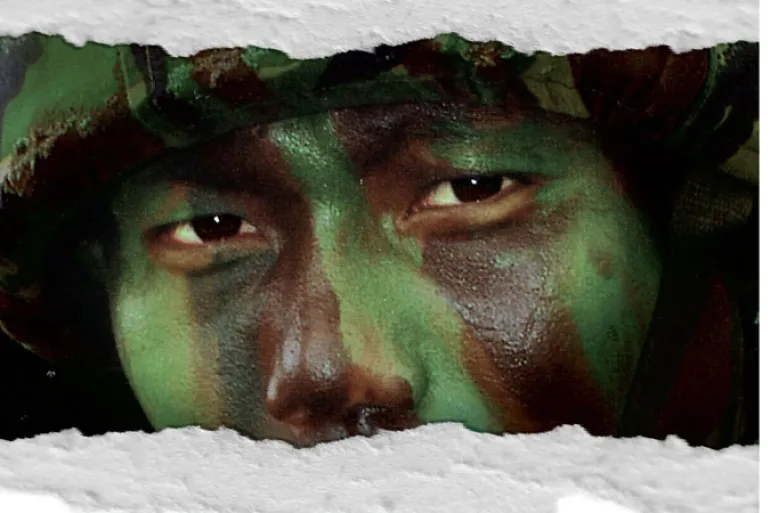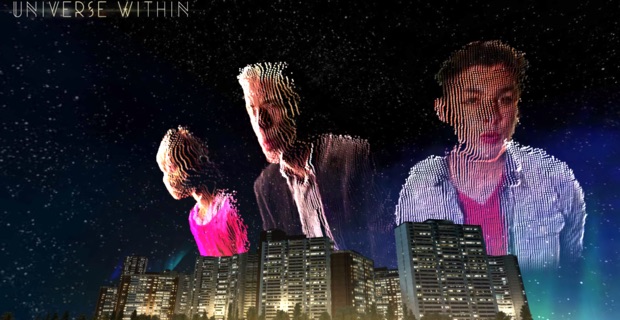- Interactive Documentary – Bear 71
- Creators – Jeremy Mendes and Leanne Allison
- Executive Producer – Loc Dao, Rob McLaughlin, David Christensen
- Funded by – National Film Board of Canada
- Budget – $347,000
Awards – Best non-fiction web series at the Digi Awards (formerly Canadian New Media Awards) in December 2012; Site of the Year by the Favorite Website Awards in January 2013; Webby Award for Best Net Art in April 2013.
Bear 71 is one of the most interesting interactive documentaries that I have ever seen.
Interactive documentaries, i-docs, web documentaries, multi-media projects – call them what you may, but they are likely to be the future of factual programming. Some interactive documentaries are difficult to navigate; often there is lots of technology and flash, leaving one to wonder about the point of the entire exercise. Bear 71 though stands out in this crowd. The technological sophistication of this multi-media project is impressive. But the documentary stands more on the fundamental principle of filmmaking – which is great storytelling. It’s the combination of technology meeting stories that makes Bear 71 a must-watch for everyone. I would encourage all my readers in Asia and beyond to check out the film here.
Produced by the National Film Board of Canada (NFBC) and created by Leanne Allison and Jeremy Mendes, Bear 71 is about a grizzly bear in the Canadian Rockies who was tracked by trail cameras. It’s a haunting story about the ways in which humans, technology, and animals interact.

The National Film Board of Canada produces some of the most cutting-edge interactive projects in the world today. I had a conversation with Loc Dao, Executive Producer of Bear 71 at the NFBC on how the project was put together.
The pre-development stage
The film director Leanne Allison had access to thousands of hours of wildlife footage captured on remote trail cameras in the Banff National Park in Canada, which is one of the most visited national parks in the world. Allison originally pitched the idea as a traditional documentary to the NFBC, but after months of discussion, the team decided that the low-resolution pictures wouldn’t make a good theatrical documentary. However, they determined that the subject matter had all the elements for a great interactive, web-based experience. Leanne had sieved through eleven years of footage; from when a three-year-old Bear 71 was collared to the point when she died when a train hit her. Almost all of Bear 71’s movements had been closely tracked, supposedly to protect her.
“We introduced Leanne to Jeremy Mendes, a creative technologist, who recommended that the story could be based on all the data that had been collected,” Loc explained.
WHERE THE WIRED WORLD ENDS AND THE WILD ONES BEGINS
“The birth of the digital idea took place when we decided to use all the data that we had for this project as a commentary on it.” National parks are created to protect animals from humans. But as we see in the film, humans are everywhere. Animals have to adapt to new challenges posed by man-made railway tracks and highways. What is the toll of this constant surveillance on the animals living in the so-called wilderness? “The project is based on the fact that everything is under surveillance today. Humans are under constant surveillance and so are animals. The way we look at wildlife and nature is through all this data and this film in a way is a commentary on our modern-day society and the way we look at science and the wild. ”
Loc mentioned the fact that the team decided early on that they wanted a first-person narrative for the script. “We wanted to tell the story from Bear 71’s point of view. We managed to get James McKinnon who has previously authored the 100 Mile Diet. McKinnon’s knowledge and his sensitivity to this issue made all the difference to the script. “JB McKinnon is a Canadian independent journalist and author, and his book the 100 Mile Diet promotes local food. The book was converted into a series for Food Channel Canada. I haven’t read the book, but his script for Bear 71 is one of the most powerful narratives I have ever heard. The script manages to weave in hard facts into an emotive and thought-provoking story.
I want you to understand this I was a good bear. One beautiful morning when I was exploring dandelions with the cubs these two people appeared. I reared up on my hind legs and was about to charge when I realized that they were just two little girls. They were crouched down like they were praying. So I chased away the cubs and everyone walked away from that. I take a certain amount of pride in that.
The voice-over for the twenty-minute narrative is by Mia Kirshner, a Canadian actress and social activist. “I don’t call her a voice-over, but an actor, for the voice, was acted on, and her acting was just so all-knowing, so powerful, so in touch with who Bear 71 was,” says Loc.
Once the elements of the script and the voice-over were decided on, the interactive experience was fine-tuned.
The Interactive Experience-
Unlike a normal documentary, an interactive documentary has a different production process.
It starts with the story; the story and the script have to be firmed up before the interactive part gets started.
The story leads to the information architecture (IA) which involves making wireframes, the blueprints of a digital design. An IA tells how content and different elements on a site should be classified and is created after all the research is completed. This then leads to the development of a prototype and the actual design which includes elements like typography and colours. And then the development and quality assurance process takes place where programmers code the different information to ensure that everything works. User testing is the final stage leading to the end product which is then marketed and released.
One of the most dramatic aspects of Bear 71 is the fact that it is a linear story, with non-linear elements. You listen to this amazing narrative, but the browsing and viewing experience is in your control. Like a video game, you can decide which way you want to go. If this is your first time with an interactive documentary, or you are tech-phobic, you are still on safe ground. The gripping narrative will keep you hooked. You do have a choice, though, of exploring different aspects of the Banff National Park, just as Bear 71 used to. You can choose to navigate in any direction you want, and you can see the surveillance footage of the different animals in the wild.
“We were on version 14 of the interactive plan, and no one but Jeremy and I understood it. It was a real challenge in terms of wireframes. We had to define the world that represented the national park and we had to put it on one screen so that users could navigate it easily. The programmers at JAM 3 (a Canadian digital design agency) created the tool that would populate the code . . . what happened in the wild world, what animals.”Loc also mentions the fact they strategically used the linear audio experience to make it more accessible to a larger audience.

The entire project from start to finish took eighteen months to complete. Funded at 350,000 Canadian dollars, it is one of the most expensive interactive projects made so far. It has so far received 238,000 unique visitors.
Multimedia documentaries are still a nascent field and many new experiments are being done. There are large media organizations like New York Times and Arte that are also at the forefront and there is a lot of smaller independent work that is receiving attention. I haven’t come across too many Asian multimedia films so far, but it’s something that all of us have to keep in mind. The future of factual programming lies in interactive documentaries. I am waiting for the day when Asian multimedia documentaries can also be a subject of review and debate.


